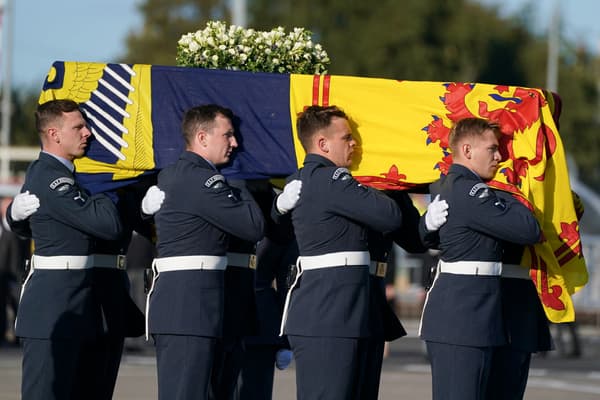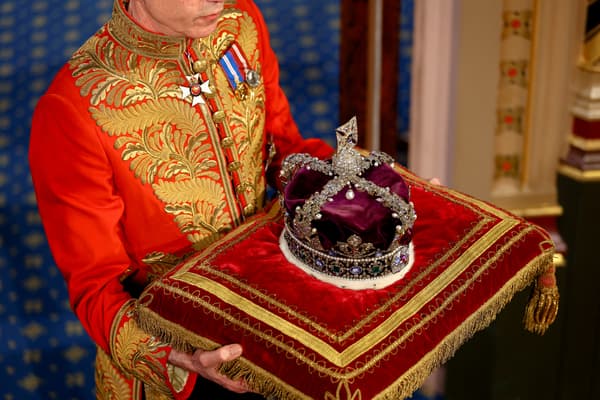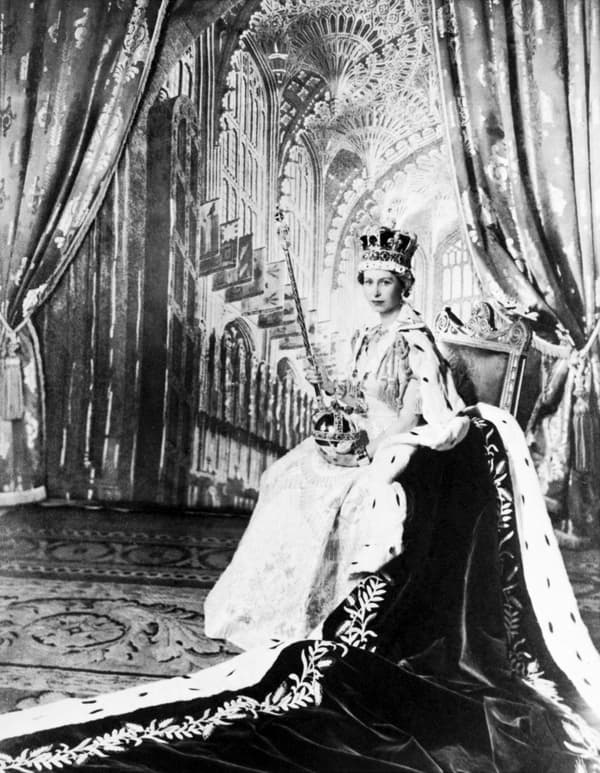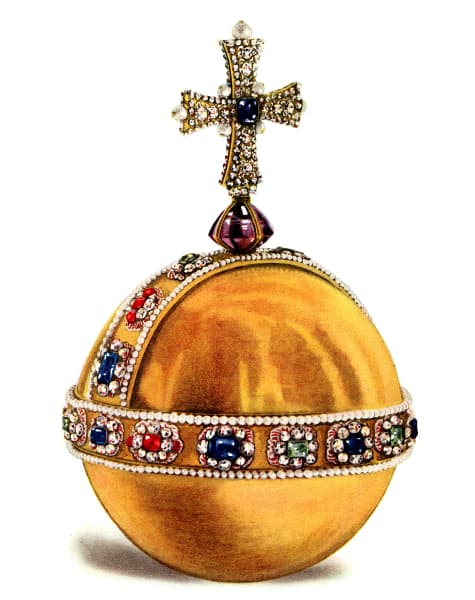This Tuesday night, the coffin of Elizabeth II took the road from London to Edinburgh. After a family stopover at Buckingham Palace, this official residence that the deceased did not like, the deceased will be installed on Wednesday under the vaults of Westminster Abbey, where English and later British sovereigns have been crowned and buried since William the Conqueror , in the eleventh century. It is in this religious building in the heart of London that the Queen’s funeral will take place next Monday, in the presence of the Windsors, figures from local institutions and 500 international leaders.
However, there is little chance of being able to see the coffin during the funeral. Because it will be covered or flanked by a multitude of symbols, linked to the history of the British monarchy.
• The royal banner
First is the royal banner that will hide the coffin from view, wrapping the wood like a shroud. According to the detail provided by the official funeral program, it is divided into four parts, referring to the components of the United Kingdom. In the upper left and lower right corners are three gold lions on a red background: they represent England. Above right, a red lion, this time standing on a yellow background, roars for Scotland. Lower left, more deaf, the harp of Ireland.

• The British Imperial Crown
Placed on the banner, a crown. The trained eye will see that it is not the same tiara as the one placed on Monday, in the same place, during the ceremony organized at St. Giles Cathedral in Edinburgh. Instead of the Scottish crown, this time we will find the British imperial crown. This, after having known various versions over the centuries, was designed in 1937 for the coronation of George VI, father of Elizabeth II.
Crown jewel among the crown jewels, as this list delivered by the dynasty site shows, it is even adorned with many gems. It is first crowned by the Saint-Édouard sapphire. The latter is the patron saint of indigenous monarchs. Edward the Confessor -according to the nickname given to him by posterity- is also the last king before the accession of William the Conqueror in 1066, if we exclude the usurper Harold, whom the Normans had just expelled.
It is another material, associated with another Edward, that adorns the purple velvet of the crown: the ruby of the “Black Prince”, alias Edward of Woodstock, who ravaged France in the 14th century on behalf of his father Edward III. , who claimed the throne of the Capetians.
Finally, a diamond is set at the height of the sovereign’s forehead. This is Cullinan II, one of the largest rough diamond halves ever discovered since it was mined in South Africa in the early 20th century. It is equivalent to 317.4 carats.

• The scepter
The scepter, located not far from the coffin, will have something to overcome. Indeed, it supports the Cullinan I, older brother of the previous one, strong for its part of 530 carats. This scepter is the image of temporal power placed under the gaze of God, embodied in the cross that completes the set. It is made of gold and is 92 centimeters long. The enamel finish is adorned with three bucolic engravings: a rose, a thistle and a clover, thanks to which fans of rugby and the Six Nations Championship will easily recognize England, Scotland and Ireland.

• The orb
The funerals of British sovereigns call for one last accessory from the goldsmith’s department: the orb. It is a golden globe, also covered in precious stones. The sphere itself symbolizes the world, or rather Christianity, as indicated by the cross that crowns it.

It is the very attribute of royal authority and perpetuates its memory long after the monarchy has lost all political power.
Source: BFM TV

